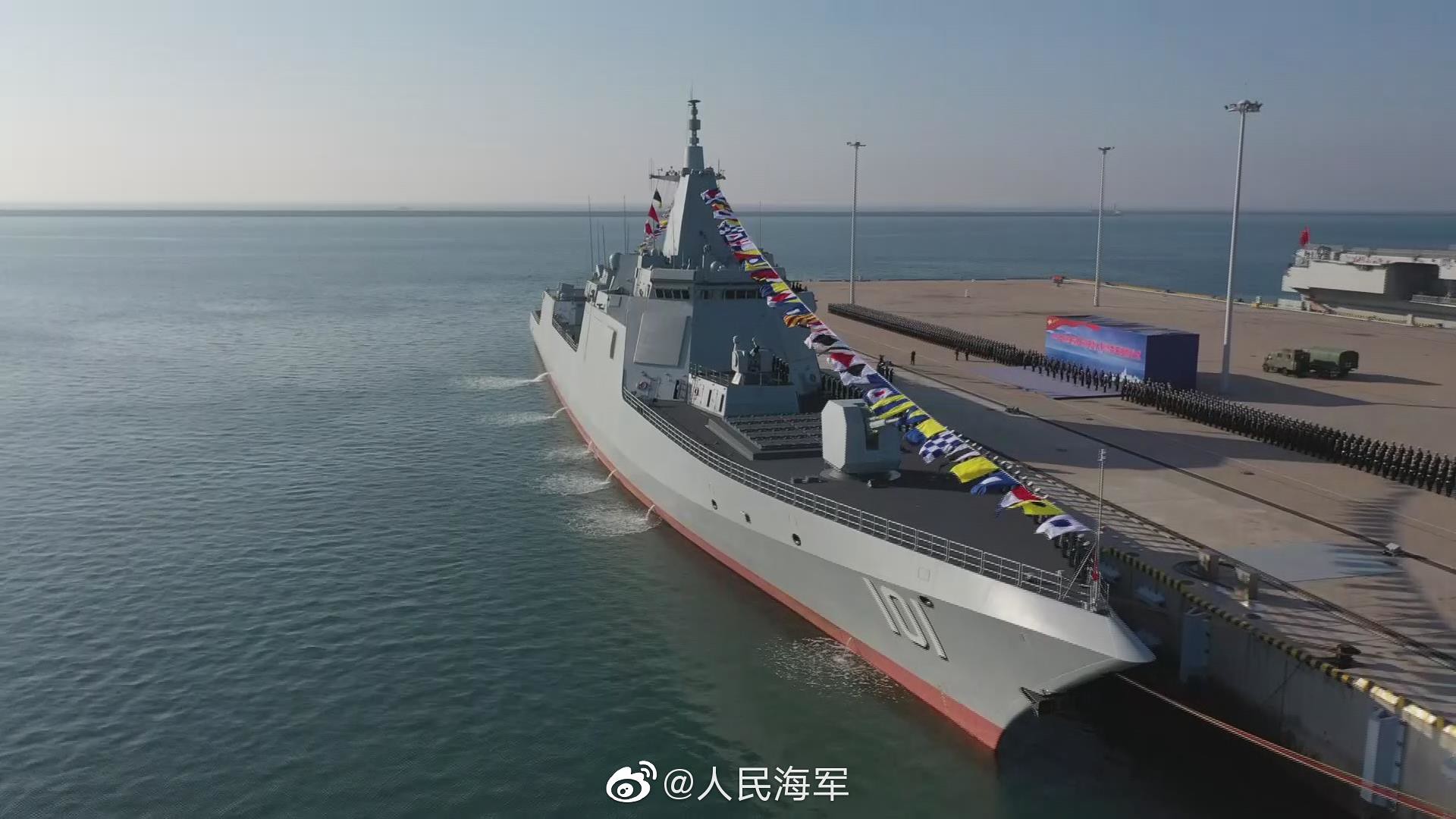can someone explain to me the use of the sprinklers vs. manual cleaning?
Well, it's automated, so the benefits of that are obvious.
But more importantly, it's not just "sprinklers" it's part of a NBC (nuclear, biological, chemical) washdown system.
can someone explain to me the use of the sprinklers vs. manual cleaning?



The upfront cost of the 055 might be higher due to all the solid state parts, but the operating cost of the 052D in the longer run may end up higher, due to the needed overhaul of all the mechanical and rotating radars that requires a cathode ray tube for an amp. This is the advantage of having your radar sensors in fixed panels and in solid state. You don't have to take down an entire radar set --- we have seen this happen in some 054A during their maintenance --- repairing, and more likely replacing the whole set. In an AESA solid state radar, diagnostics will check for the whole panel, identify broken or failing elements, then you have the technician go to that section of the array, pull out the broken module set on a tray from the cabinet, then insert a new one. The array will then be recalibrated. The cool part about this is this can be done on sea, so the ship doesn't have to return to port. All it needs is to keep a sufficient number of spare modules.
While this can be said of the 052D's main AESA, the Type 346, the 052D is still full of secondary radars that are old school and mechanical, such as the Type 364 surface search radar, the Type 344 gunnery radar and the Type 366 antiship radar. If any of these fail, the ship will likely head back to port, and the repairs of these radars won't be easy as they are on top of the deck house and one is on top of the mast, requiring you to open their radomes.
Another thing is that once more 055s are made, the price curve of all these solid state parts will drop like a stone, which means it will eventually take down the upfront cost of the 055. We are talking of things that are fabbed, then inserted into printed circuit boards, not things that have to be precision machined, requires hardened bearings, lubrication, requires periodic inspection and replacement.
When it comes to a midlife upgrade, all you need to do to improve the sensor performance is to switch out all the modules for a new set. Its not unlike switching out older server blades for new blades on a data center. The only limits you have is the number of modules you can insert with your housing predetermined by what's already on place. I suspect the older 052C has already gone through this process.
Of course all these are arguments for an all solid state sensor 052X and XX4B.
In such IShips, which are more like floating data centers with arrays of fixed panel sensors, there is hardly a moving part above the machinery citadel of the ship other than the hatches of the VLS, air conditioning and ventilation. Future upgrades to these IShips are done by changing circuit boards and blades off the cabinets, installing new software, training the officers for those upgrades.
The funnier part, is that the next-gen 5G base station would all be AESA. And China would make most of them. Considering the current number of 4G base stations (6m in the whole world and 4.5m of them in China), the 5G base stations would be manufactured in the number of more than 10m.
What does this whole thing mean? It means China's AESA module would be cheaper then dirt in the future.
I dont think you can compare the two..The funnier part, is that the next-gen 5G base station would all be AESA. And China would make most of them. Considering the current number of 4G base stations (6m in the whole world and 4.5m of them in China), the 5G base stations would be manufactured in the number of more than 10m.
What does this whole thing mean? It means China's AESA module would be cheaper then dirt in the future.
I dont think you can compare the two..
5g is divided into two freq ranges, FR1 and FR2.
FR1 is basically 4g with new software based network technology like SDR etc.
FR2, otoh, although being related to nominal X band Aesa, would use low power density base stations with reach less than a km and power less than 50w.
Compared to this, the military grade radar requires high power density for long range lookout and lock on.
Mass producing Toyota doesnt make Ferrari any cheaper.
There's wrong, and then there's Minnie Chan wrong.Here is an article by minnie chen saying that the Nanchang is not outfitted with weapons WRONG
Here is an article by minnie chen saying that the Nanchang is not outfitted with weapons WRONG
